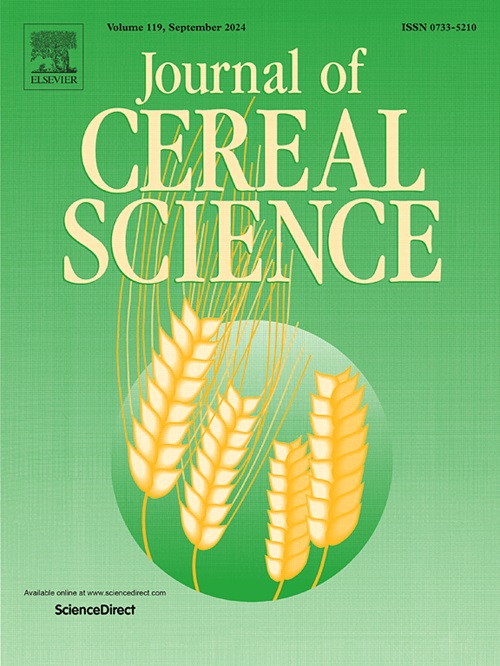Characterization and functionality of fermented sorghum and enset flours in a gluten-free deposited biscuit
IF 3.9
2区 农林科学
Q2 FOOD SCIENCE & TECHNOLOGY
引用次数: 0
Abstract
This study investigated the potential of fermented enset and sorghum flours to enhance the quality of gluten-free products. Proximate composition, mineral content, organic acids, total phenolics, pasting profile, and dough characteristics of bulla, kocho, sorghum (var. Merera), and sorghum/kocho co-fermented flours were evaluated. Also, kocho and bulla flours produced following tradicional and commercial processes were contrasted. Bulla flour exhibited high starch content and pasting viscosity, making it suitable for gluten-free applications. Traditional processing methods resulted in higher lactic acid content and lower pH in kocho and bulla flours. Gluten-free deposited biscuits formulated with different proportions of these flours were assessed for physical and sensory properties. Results showed that blending kocho with sorghum flour increased protein content while maintaining fiber and minerals. Biscuits made with sorghum and bulla flours had low water activity, while those with sorghum/kocho co-fermented flour were classified as intermediate moisture foods. Hedonic sensory evaluation conducted in Arba Minch (Ethiopia) revealed that a 60:40 ratio of kocho to sorghum flour produced a biscuit with highest scores for color, texture, aroma, taste, and overall acceptance. This study demonstrates the potential of fermented enset and sorghum flours to enhance gluten-free products and provides valuable insights for product development and formulation strategies.
无麸质沉积饼干中发酵高粱和enset面粉的特性和功能
本研究探讨了发酵玉米粉和高粱粉在提高无麸质食品质量方面的潜力。对大球茎、可可豆、高粱(Merera品种)和高粱/可可豆共发酵粉的近似组成、矿物质含量、有机酸、总酚类物质、糊状特征和面团特性进行了评价。同时,对比了传统工艺和商业工艺生产的kocho粉和bulla粉。Bulla面粉具有高淀粉含量和高糊状粘度,适合无麸质应用。传统的加工方法导致粗粉和粗粉的乳酸含量较高,pH值较低。用这些面粉的不同比例配制无麸质沉积饼干,评估其物理和感官特性。结果表明:高粱粉与高粱粉混合,在保持纤维和矿物质含量的同时,提高了高粱粉的蛋白质含量。用高粱粉和大黄粉制作的饼干水分活度较低,用高粱粉和大黄粉共同发酵制作的饼干属于中等水分食品。在Arba Minch(埃塞俄比亚)进行的享乐感官评估显示,kocho和高粱粉的比例为60:40,可以生产出在颜色、质地、香气、味道和整体接受度方面得分最高的饼干。该研究证明了发酵玉米粉和高粱粉在提高无谷蛋白产品质量方面的潜力,并为产品开发和配方策略提供了有价值的见解。
本文章由计算机程序翻译,如有差异,请以英文原文为准。
求助全文
约1分钟内获得全文
求助全文
来源期刊

Journal of Cereal Science
工程技术-食品科技
CiteScore
7.80
自引率
2.60%
发文量
163
审稿时长
38 days
期刊介绍:
The Journal of Cereal Science was established in 1983 to provide an International forum for the publication of original research papers of high standing covering all aspects of cereal science related to the functional and nutritional quality of cereal grains (true cereals - members of the Poaceae family and starchy pseudocereals - members of the Amaranthaceae, Chenopodiaceae and Polygonaceae families) and their products, in relation to the cereals used. The journal also publishes concise and critical review articles appraising the status and future directions of specific areas of cereal science and short communications that present news of important advances in research. The journal aims at topicality and at providing comprehensive coverage of progress in the field.
 求助内容:
求助内容: 应助结果提醒方式:
应助结果提醒方式:


